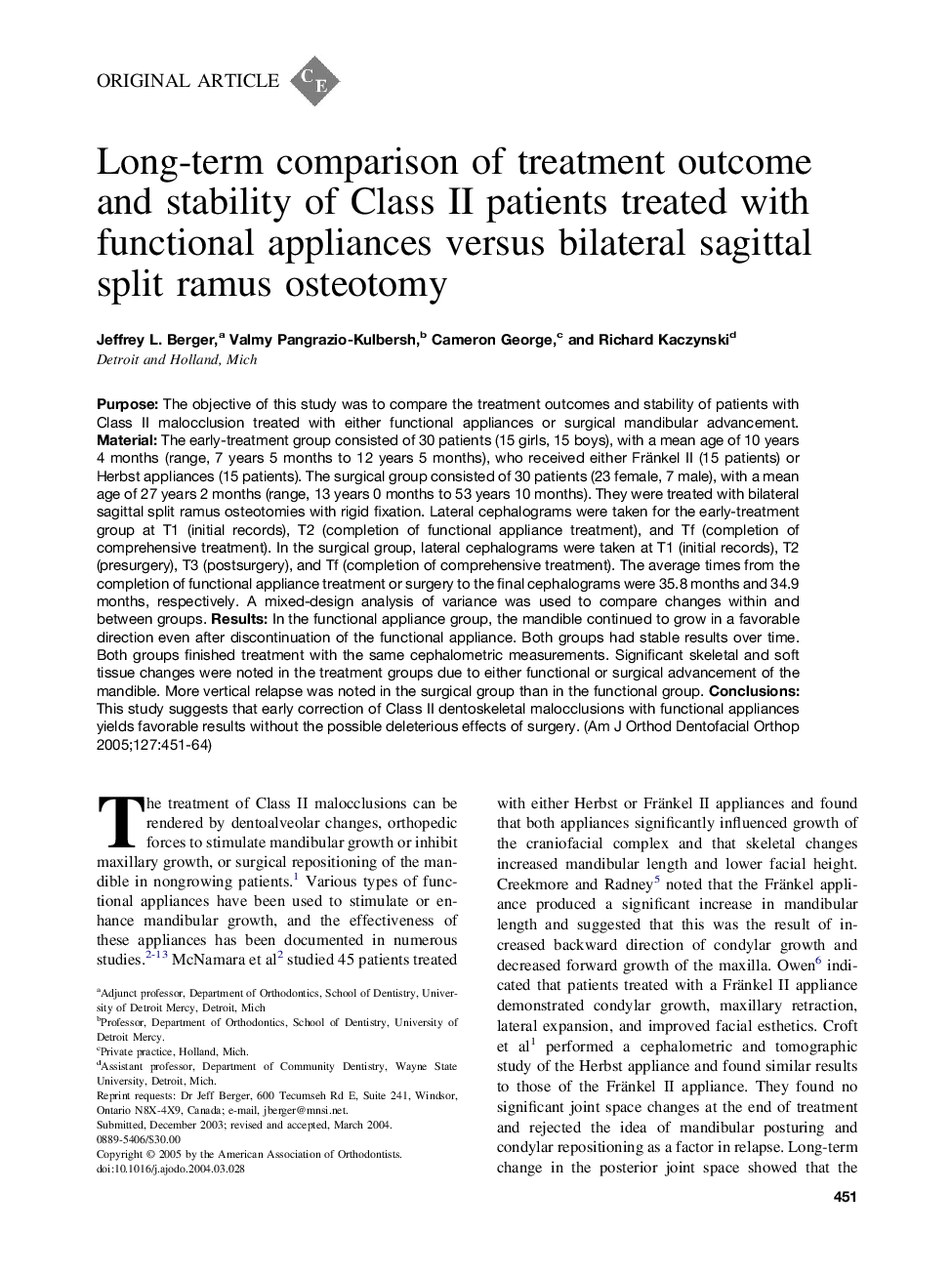| کد مقاله | کد نشریه | سال انتشار | مقاله انگلیسی | نسخه تمام متن |
|---|---|---|---|---|
| 9992990 | 1582820 | 2005 | 14 صفحه PDF | دانلود رایگان |
عنوان انگلیسی مقاله ISI
Long-term comparison of treatment outcome and stability of Class II patients treated with functional appliances versus bilateral sagittal split ramus osteotomy
دانلود مقاله + سفارش ترجمه
دانلود مقاله ISI انگلیسی
رایگان برای ایرانیان
موضوعات مرتبط
علوم پزشکی و سلامت
پزشکی و دندانپزشکی
دندانپزشکی، جراحی دهان و پزشکی
پیش نمایش صفحه اول مقاله

چکیده انگلیسی
Purpose: The objective of this study was to compare the treatment outcomes and stability of patients with Class II malocclusion treated with either functional appliances or surgical mandibular advancement. Material: The early-treatment group consisted of 30 patients (15 girls, 15 boys), with a mean age of 10 years 4 months (range, 7 years 5 months to 12 years 5 months), who received either Fränkel II (15 patients) or Herbst appliances (15 patients). The surgical group consisted of 30 patients (23 female, 7 male), with a mean age of 27 years 2 months (range, 13 years 0 months to 53 years 10 months). They were treated with bilateral sagittal split ramus osteotomies with rigid fixation. Lateral cephalograms were taken for the early-treatment group at T1 (initial records), T2 (completion of functional appliance treatment), and Tf (completion of comprehensive treatment). In the surgical group, lateral cephalograms were taken at T1 (initial records), T2 (presurgery), T3 (postsurgery), and Tf (completion of comprehensive treatment). The average times from the completion of functional appliance treatment or surgery to the final cephalograms were 35.8 months and 34.9 months, respectively. A mixed-design analysis of variance was used to compare changes within and between groups. Results: In the functional appliance group, the mandible continued to grow in a favorable direction even after discontinuation of the functional appliance. Both groups had stable results over time. Both groups finished treatment with the same cephalometric measurements. Significant skeletal and soft tissue changes were noted in the treatment groups due to either functional or surgical advancement of the mandible. More vertical relapse was noted in the surgical group than in the functional group. Conclusions: This study suggests that early correction of Class II dentoskeletal malocclusions with functional appliances yields favorable results without the possible deleterious effects of surgery.
ناشر
Database: Elsevier - ScienceDirect (ساینس دایرکت)
Journal: American Journal of Orthodontics and Dentofacial Orthopedics - Volume 127, Issue 4, April 2005, Pages 451-464
Journal: American Journal of Orthodontics and Dentofacial Orthopedics - Volume 127, Issue 4, April 2005, Pages 451-464
نویسندگان
Jeffrey L. Berger, Valmy Pangrazio-Kulbersh, Cameron George, Richard Kaczynski,